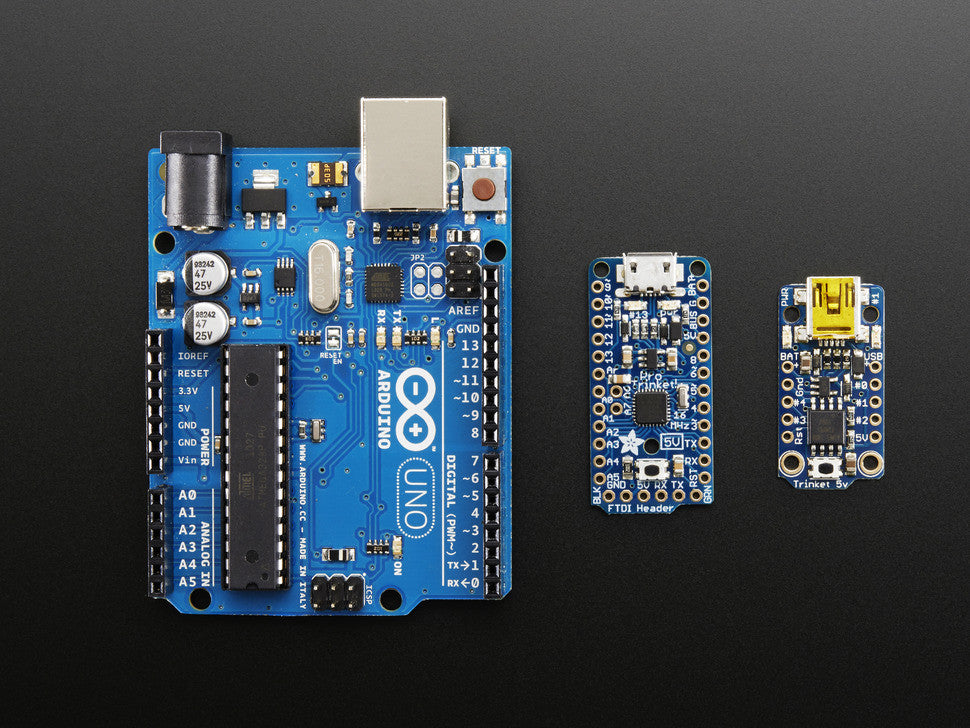

- #Lithium battery to power adafruit trinket serial#
- #Lithium battery to power adafruit trinket portable#
- #Lithium battery to power adafruit trinket pro#
- #Lithium battery to power adafruit trinket software#

#Lithium battery to power adafruit trinket software#
Internal oscillator runs at 8MHz, but can be doubled in software for 16MHz.ATtiny85 on-board, 8K of flash, 512 byte of SRAM, 512 bytes of EEPROM.Simply use a USB v2 port or a USB hub in between Some computers' USB v3 ports don't recognize the Trinket's bootloader.
#Lithium battery to power adafruit trinket serial#
Trinket does not have a Serial port connection for debugging so the serial port monitor will not be able to send/receive data.There are some things you trade off for such a small and low cost microcontroller! The 5V version can run at 8 MHz or at 16MHz by setting the software-set clock frequency.Įven though you can program Trinket using the Arduino IDE, it's not a fully 100% Arduino-compatible. Use the 5V one for sensors and components that can use or require 5V logic. Use the 3V one to interface with sensors and devices that need 3V logic, or when you want to power it off of a LiPo battery. Both work the same, but have different operating logic voltages. You can't stack a big shield on it but for many small & simple projects the Trinket will be your go-to platform. In fact we even made some simple modifications to the Arduino IDE so that it works like a mini-Arduino board. We designed a USB bootloader so you can plug it into any computer and reprogram it over a USB port just like an Arduino. The Attiny85 is a fun processor because despite being so small, it has 8K of flash, and 5 I/O pins, including analog inputs and PWM 'analog' outputs. It's our lowest-cost arduino-IDE programmable board! Perfect for when you don't want to give up your expensive dev-board and you aren't willing to take apart the project you worked so hard to design. We wanted to design a microcontroller board that was small enough to fit into any project, and low cost enough to use without hesitation. For charging single Lithium Ion/Lithium Polymer 3.7/4.2v batteries (not for older 3.6/4.Trinket may be small, but do not be fooled by its size! It's a tiny microcontroller board, built around the Atmel ATtiny85, a little chip with a lot of power.
#Lithium battery to power adafruit trinket pro#

If you want to add an On/Off switch, we also made that really easy. When the battery is fully charged and ready for use, the green LED turns on. There are two LEDs - one red and one green. Solder the backpack on with the extra long header so that it can still plug into a breadboard, or clip the long header leads short afterwards for a slim package. (Technically its overclocking but we've never seen that affect the Pro Trinket itself, AVRs are happy to overclock without complaint). However, many times, you can run a 5V Pro Trinket + accessories off of the ~4V from the LiPoly battery with no problem. Ideally, this backpack is for use with the 3.3V Pro Trinket, so that the battery voltage (3.7V-4.2V) will get regulated down to 3.3V on the Pro Trinket board. Unplug the USB port and the Pro Trinket will switch over to the rechargeable battery. When the Pro Trinket USB port is powered, the battery is recharged automatically. This LiPoly backpack makes it really easy to do! Instead of wiring 2 or 3 boards together to make a charging system, this little PCB sits on top of the Pro Trinket and allows a LiPoly/LiIon battery to plug in.
#Lithium battery to power adafruit trinket portable#
If you have a Pro Trinket you probably know it's the perfect little size for a portable project.


 0 kommentar(er)
0 kommentar(er)
